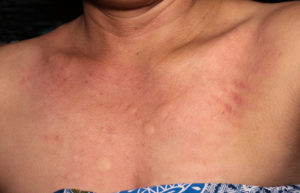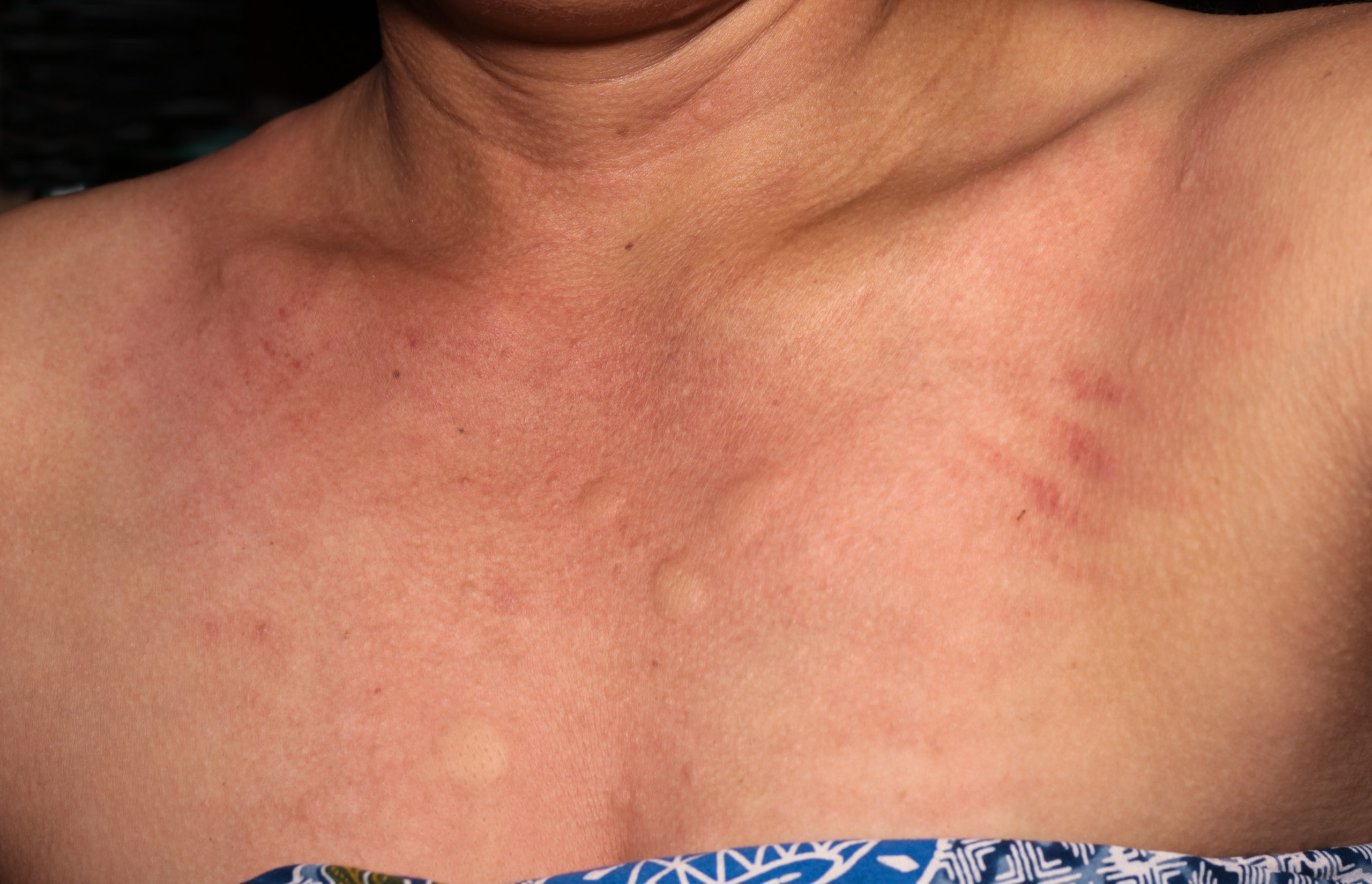
As the weather warms up, you may consider using sunscreen. You may wear a new necklace. You may use a new skin product or detergent. If your skin has ever become irritated or itchy after coming into contact with any substance, doctors may point to what is commonly referred to as contact dermatitis.
The two most common types of contact dermatitis are irritant contact dermatitis and allergic contact dermatitis. We’ll focus on the latter.
Allergic contact dermatitis is the immune system’s response to the foreign substance. This type of reaction is distinct from an anaphylactic reaction which releases the antibody IgE and can affect breathing. Allergic contact dermatitis affects the skin, specifically, and does not release this antibody.
Reaction-causing substances widely vary depending on the individual’s personal allergies or sensitivities. Commonly, they can include, but are not limited to:
- antibiotics
- nickel or other metals
- poison ivy and poison oak
- preservatives, such as formaldehyde and sulfites
- rubber products, such as latex
- sunscreens
- tattoo ink
- black henna, which may be used for tattoos or in hair dye
Chemicals in household cleaners or detergents can cause irritation, and even certain soaps can cause reactions.
Visible bodily response, however, may not take form until anywhere from 12 to 74 hours after exposure, making it difficult to pin down the cause. This can also last anywhere from two to four weeks after exposure. Reactions may appear as:
- blistered areas that may ooze
- dry, scaly areas of skin
- hives
- itching
- red skin, which can appear in patches
- skin that feels like it’s burning, but doesn’t have visible skin sores
- sun sensitivity
To more accurately determine the cause of such reactions, doctors can perform a patch test where they expose your skin to small amounts of certain substances/chemicals. After wearing the patch for a couple of days, doctors will analyze your skin in the subsequent days or weeks. Reactions may take place anywhere from the moment of application to multiple days following initial exposure, and these can help doctors determine a specific course of action.
What to avoid
First and foremost, if your skin reacts, avoid scratching at all costs because this can lead to infection.
Second, once you determine what may be causing reactions, avoid that substance. This often requires forethought to which products you use around the house and what substances come in contact with your skin. Doctors can prescribe antihistamines and other treatments, but cutting out the substance is often much more effective.
If you suspect you may have incidentally come into contact with substances you’re allergic to, wash with soap and water (not too hot or too cold) as soon as possible. Cool, wet compresses may help with itching or irritation. Lastly, know that this process can take time, and it may require trial and error to determine the cause of allergic contact dermatitis.
Disclaimer: This blog provides general information and discussion about medical, cosmetic, mohs, and surgical dermatology. The words and other content provided in this blog, and in any linked materials, are not intended and should not be construed as medical advice. If the reader or any other person has a medical concern, he or she should consult with an appropriately-licensed dermatologist or other health care worker.
